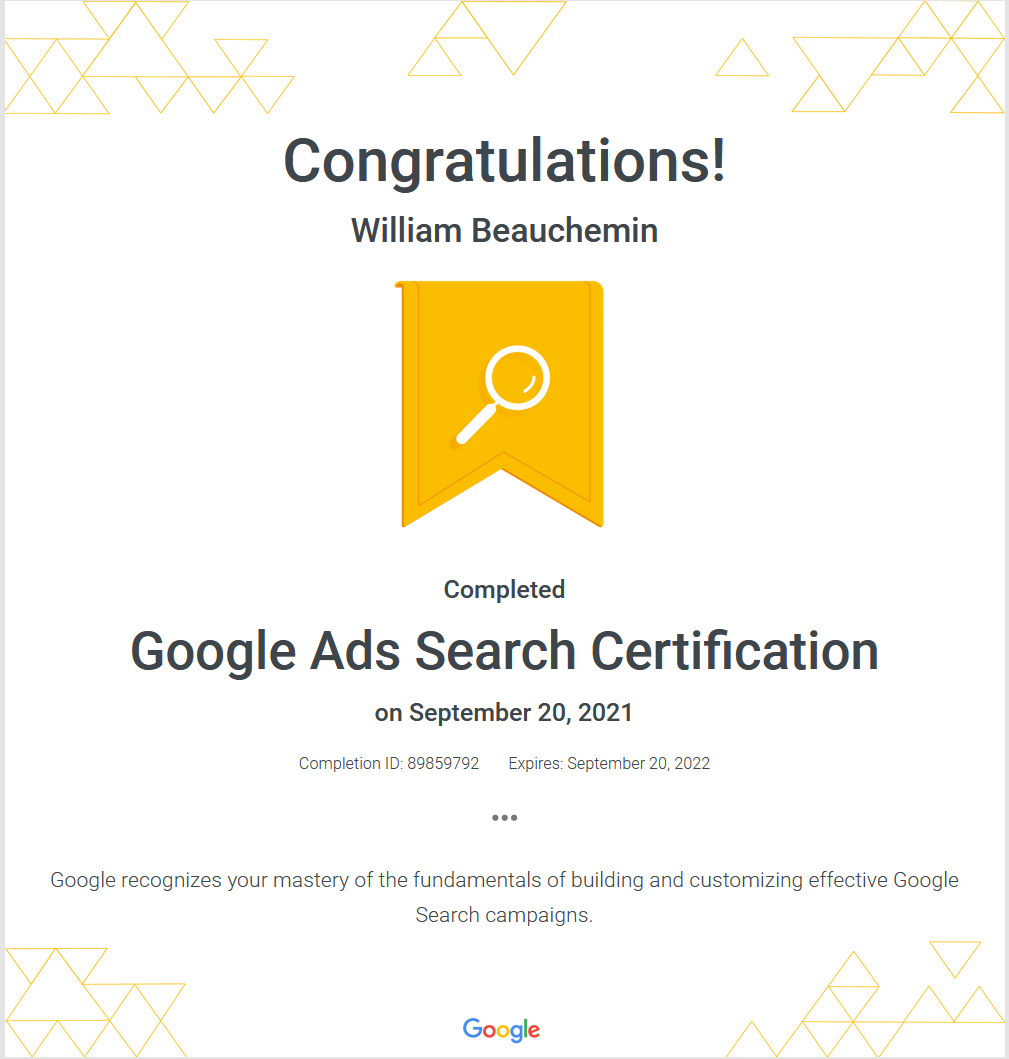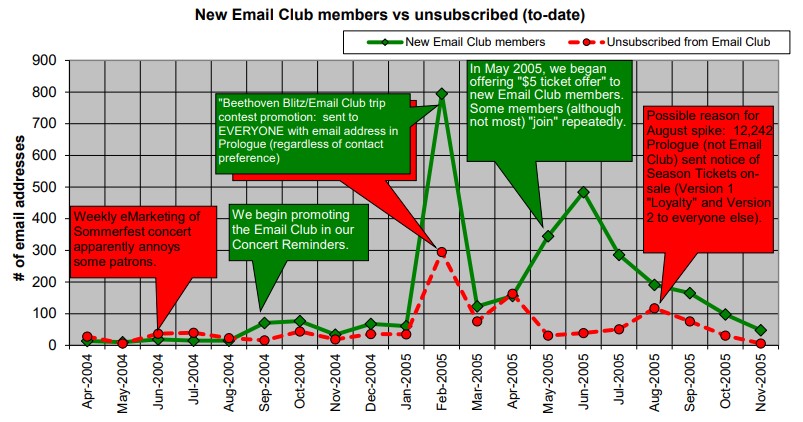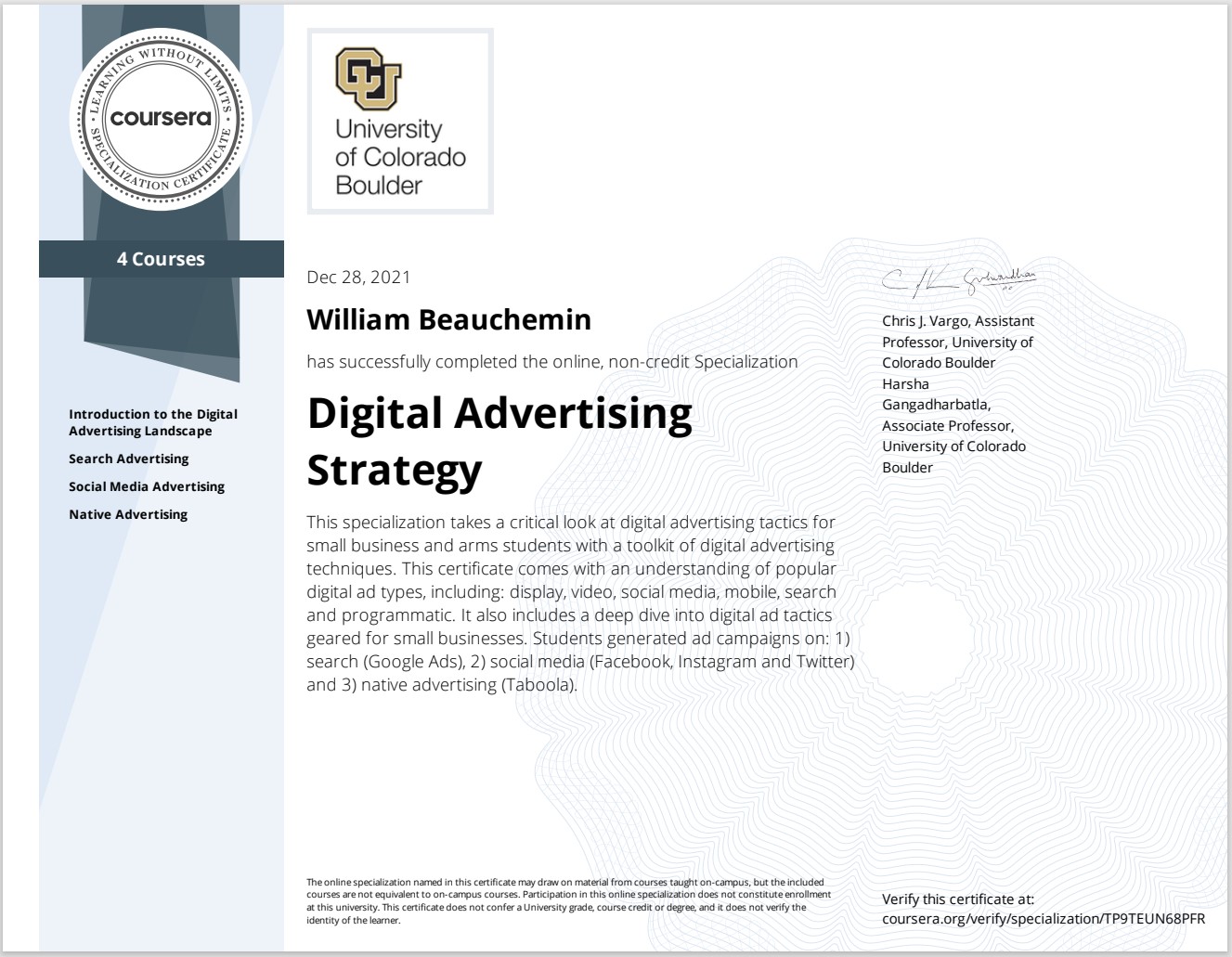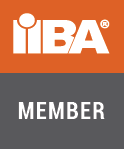My first experience with digital marketing was at the Minnesota Orchestra. It was while I was their Marketing Database Manager that the CAN-SPAM Act went into effect. From the marketing and I.T. newsletters to which I subscribed, I had learned of the proposed CAN-SPAM Act as it made its way through Congress. I educated the marketing management of its implications and our need to prepare. As the Marketing Database Manager, I implemented the use of "unsubscribe" links in every email message I sent and took precautions to implement all unsubscribes within the required 10 business days.
As part of my digital marketing duties at the Orchestra, I also implemented email pixel-tracking and URL tagging. As a result, I was able to track the effectiveness of marketing emails and of my cross-selling of concerts in our concert reminder emails (the latter being my own idea).
It was more than 10 years before I returned to digital marketing, this time as a contractor-consultant to the YMCA of the North, the parent organization of 26 branches in the greater Twin Cities area and Rochester, Minnesota. At the YMCA, I defined UTM tags for campaigns and analyzed the results from Google Analytics. My analytical work included reporting the interaction of YMCA members with our email newsletters and email campaigns. I reported on the click-through statistics by member demographic and headline/link text, from which I was able to make recommendations.
My first (and very extensive) work with digital advertising was during the twelve months I spent as a contractor-consultant for the digital advertising division of Target Corporation, Roundel. Besides selling ads on the Target website and app, Roundel places advertising for clients elsewhere, leveraging the knowledge it has about Target customers. In my role at Target, I created a self-serve reporting tool on the performance of Roundel ad products and of client campaigns. I did ad hoc reporting and created executive dashboards on digital ad performance and revenue. I also developed an algorithm to rationalize ad prices based on their performance.
My clients for work in this area are:
Minnesota Orchestra
- Email marketing (ad copy, cross-selling, contact list creation, pixel-tagging, response tracking, and analysis).
- Website maintenance: Coldfusion coding, sound clip creation.
YMCA of the North
- Analysis of Google Analytics data.
- Email campaign analysis.
- Analysis of digital app use and its impact on member retention.
- UTM tagging of links in email newsletters and landing pages.
- Demographic analysis of newsletter click-through results (by headline, by article, by link) with recommendations.
Target Corporation/Roundel digital advertising division
- Analysis of digital ad metrics by platform, placement, and objective.
- Created self-serve reporting tool on digital ad performance.
- Created executive dashboards (Domo) on digital ad performance KPIs.
- Created algorithm to rationalize ad pricing based on performance for the advertiser.
Because my work in digital marketing and advertising is confidential, I can offer you only one very old example of my work and some of the course work I did for the University of Colorado Boulder.
Reporting on email marketing statistics
As Marketing Database Manager, I was responsible for executing all email campaigns. I also maintained patron (customer) email preferences in our customer relationship management (CRM) system. Every week, I generated a report on email marketing statistics for the two directors of marketing and the the two product managers. Here is a sample of that report, which I designed.
Essays & projects
During the four months of courses of the Digital Advertising Strategy specialization, my courses consisted of
- Introduction to Digital Advertising
- Search Advertising
- Native Advertising
- Social Media Advertising
Below is some of the coursework I did for these courses. They will serve to demonstrate my understanding of :
- Digital advertising concepts and techniques
- Planning, budgeting, and executing campaigns
- How digital advertising is impacted by demographics and technology
Google Ad search campaign for pet service provider, Rover
Using an actual pet service provider as the basis, this project had me plan a Google Search marketing campaign with specific goals and a budget of $3,000 per month. For this project, I developed a general plan, did research on the frequency of search terms and Google's prices for those words, and defined guardrails on spending based on the alternative cost of doing a mass mailing of postcards. The project required me to create actual (draft only) Google Search ads and take screenshots. 12 pages.
Social media advertising strategy for a bicycle shop
This project required me to choose a small business of my choice and plan a social media campaign for it. My considerations included budget, competition, goals, target audience, choice of social media, messaging, measuring results, and whether to deliver my messages as a News Feed or as a Story. My choice of business was a small bicycle shop. 7 pages.
Analysis of four examples of native advertising
Examines how well each type of ad leverages the content in which it resides, its definition of conversion, and my assessment of the user experience. One of the ads I consider is the "highly rated" items ad inserted into the search results on Amazon.com: among my considerations is why it is located where it is on the Amazon search results page and why advertisers would want to be in such an ad. 11 pages.
Artificial Intelligence and chatbots in the future of social media advertising
Using a Department of Homeland Security's document on hostile uses of A.I. against social media, I translate those uses into "positives" that digital advertisers could put to legitimate use. 2 pages.
Digital ad spend mix at each stage of a small business
Each stage of a small business's life has varying levels of need for customer awareness, gaining new customers, retaining customers, and re-engaging with customers. Using a thought experiment about a neighborhood bakery, I consider how that small business should apportion its digital ad spending to meet those needs at each stage of the bakery's life. 5 pages.
Social media on mobile has a literal blind spot
This assignment required me to respond to the assertion that "the intersection of mobile [devices] and social [media] is where the future of advertising lies." I disagreed with this on the basis of statistics on the aging of the U.S. and world populations, the inevitability of age-related eyesight problems, and the preference of device (mobile or desktop) by age group. 4 pages.
Considers financial and non-financial benefits and possible pitfalls. 3 pages.
Copyright Will Beauchemin 2024





